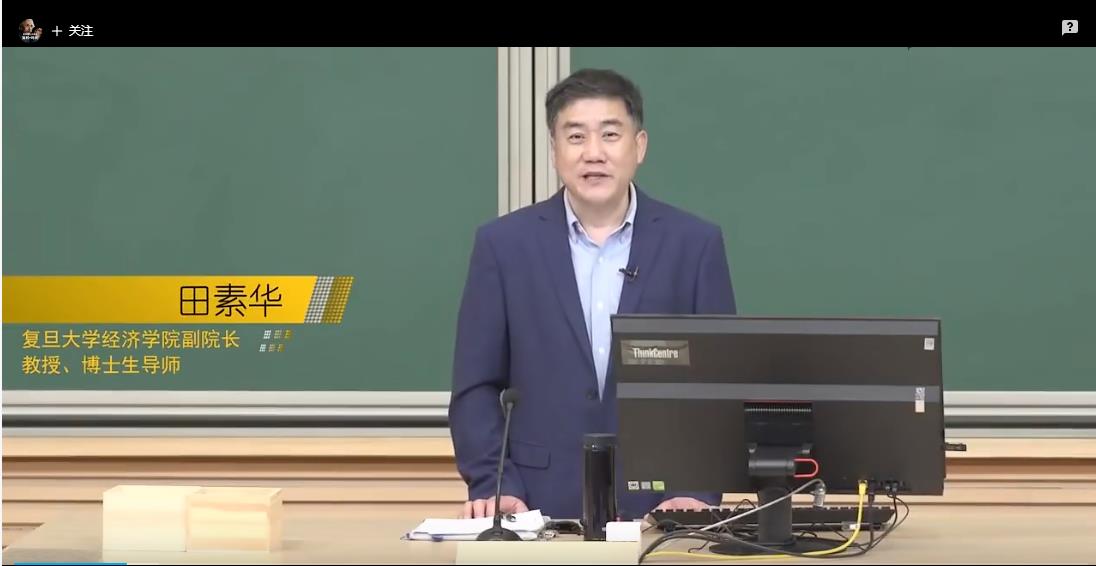- 1【货币经济学】
- 2.货币经济学-1.1经济活动中的货币现象-01
- 3.货币经济学-1.1经济活动中的货币现象02
- 4.货币经济学-1.1经济活动中的货币现象03
- 5.货币经济学-1.2货币理论发展脉络01
- 6.货币经济学-1.2货币理论发展脉络02
- 7.货币经济学-1.2货币理论发展脉络03
- 8.货币经济学-1.3货币经济学课程框架
- 9.货币经济学-2.1货币范畴
- 10.货币经济学-2.2货币职能01
- 11.货币经济学-2.2货币职能02
- 12.货币经济学-2.3货币形态
- 13.货币经济学-2.4货币层次
- 14.货币经济学-2.5货币总量统计
- 15.货币经济学-中-3.1货币供给系统01
- 16.货币经济学-中-3.1货币供给系统02
- 17.货币经济学-中-3.2多倍存款创造01
- 18.货币经济学-中-3.2多倍存款创造02
- 19.货币经济学-中-3.2多倍存款创造03
- 20.货币经济学-中-3.2多倍存款创造04
- 21.货币经济学-中-3.3基础货币模型01
- 22.货币经济学-中-3.3基础货币模型02
- 23.货币经济学-中-3.3基础货币模型03
- 24.货币经济学-中-3.4货币供给的资金流量模型
- 25.货币经济学-中-4.1中央银行对基础货币的控制
- 26.货币经济学-中-4.2基础货币变动的影响因素和政府预算赤字与基础货币变动
- 27.货币经济学-中-4.3外汇市场干预与基础货币变动01
- 28.货币经济学-中-4.3外汇市场干预与基础货币变动02
- 29.货币经济学-中-4.3外汇市场干预与基础货币变动03
- 30.货币经济学-中-4.4基础货币变动的影响因素的美国事例01
- 31.货币经济学-中-4.4基础货币变动的影响因素的美国事例02
- 32.货币经济学-中-4.5银行资产转换行为与货币供给
- 33.货币经济学-中-4.6非银行金融中介机构与货币供给和多资产货币供给模型
- 34.货币经济学-中-5.1货币交易方程
- 35.货币经济学-中-5.2现金余额货币数量理论和货币需求动机
- 36.货币经济学-中-5.3流动性偏好理论与货币需求
- 37.货币经济学-中-5.4利率与交易性货币需求
- 38.货币经济学-中-5.5不确定性与预防性货币需求
- 39.货币经济学-中-5.6资产组合行为与投机性货币需求(上)
- 40.货币经济学-中-5.6资产组合行为与投机性货币需求(下)
- 41.货币经济学-中-5.7现代货币数量理论
- 42.货币经济学-中-5.8基于微观交易行为的货币需求理论
- 43.货币经济学-中-6.1检验货币需求时碰到的问题(上)
- 44.货币经济学-中-6.1检验货币需求时碰到的问题(下)
- 45.货币经济学-中-6.2对20世纪70年代以前货币需求的实证检验
- 46.货币经济学-中-6.3对20世纪70年代以后货币需求的实证检验
- 47.货币经济学-中-6.4货币替代、缓冲存货模型和对货币需求函数稳定性的怀疑
- 48.货币经济学-中-6.4货币替代、缓冲存货模型和对货币需求函数稳定性的怀疑
- 49.货币经济学-中-7.0引言
- 50.货币经济学-中-7.1信用工具类型和到期收益率
- 51.货币经济学-中-7.2测算利率的其他方法
- 52.货币经济学-中-7.3利率的多样性和流动性偏好理论
- 53.货币经济学-中-7.4可贷资金理论
- 54.货币经济学-中-7.5实际经济中的利率变动
- 55.货币经济学-中-7.6利率的风险结构和期限结构(上)
- 56.货币经济学-中-7.6利率的风险结构和期限结构(下)
- 57.货币经济学-中-7.7利率政策与利率市场化
- 58.货币经济学-中-8.1汇率与经济运行
- 59.货币经济学-中-8.2汇率的长期变动
- 60.货币经济学-中-8.3汇率的短期变动
- 61.货币经济学-下-9.1利率调整与总需求变动
- 62.货币经济学-下-9.1利率调整与总需求变动(上
- 63.货币经济学-下-9.2货币供应量调整与总需求变动(上)
- 64.货币经济学-下-9.2货币供应量调整与总需求变动(下)
- 65.货币经济学-下-9.3IS-LM模型(上)
- 66.货币经济学-下-9.3IS-LM模型(下)
- 67.货币经济学-下-9.4货币政策与财政政策对总需求管理的有效性比较(上)
- 68.货币经济学-下-9.4货币政策与财政政策对总需求管理的有效性比较(下)
- 69.货币经济学-下-9.5长期中的IS-LM模型
- 70.货币经济学-下-9.6总需求
- 71.货币经济学-下-10.1菲律普斯曲线
- 72.货币经济学-下-10.2总供给-720P
- 73.货币经济学-下-10.3经济均衡与总产出-720P
- 74.货币经济学-下-10.4通货膨胀-720P
- 75.货币经济学-下-10.5为什么会出现引发通货膨胀的货币政策-720P
- 76.货币经济学-下-10.6就业压力与政策干预-720P
- 77.货币经济学-下-10.7理性预期与卢卡斯批判-720P
- 78.货币经济学-下-10.8预期与货币政策有效性(上)-720P
- 79.货币经济学-下-10.8预期与货币政策有效性(下)-720P
- 80.货币经济学-下-11.1货币政策最终目标-720P
- 81.货币经济学-下-11.2货币政策实施战略-720P
- 82.货币经济学-下-11.3货币市场调控机制-720P
- 83.货币经济学-下-11.4公开市场操作-720P
- 84.货币经济学-下-11.5贴现政策-720P
- 85.货币经济学-下-11.6存款准备金管理-720P
- 86.货币经济学-下-12.1开放经济下的货币供给机制-720P
- 87.货币经济学-下-12.2固定汇率制度与货币政策-720P
- 88.货币经济学-下-12.3汇率目标区管理与货币政策-720P
- 89.货币经济学-下-12.4浮动汇率制度与货币政策-720P
- 90.货币经济学-下-12.5改进开放经济下货币政策实施效率的建议
- 91.货币经济学-下-12.6总结-720P
- 92.货币经济学-下-13.1货币政策规则的发展-720P
- 93.货币经济学-下-13.2货币政策规则的一般设计-720P
- 94.货币经济学-下-13.3货币政策工具规则(上)-720P
- 95.货币经济学-下-13.3货币政策工具规则(下)-720P
- 96.货币经济学-下-13.4货币政策目标规则(上)-720P
- 97.货币经济学-下-13.4货币政策目标规则(下)-720P

This course provides an introduction to monetary economics of banking. In particular, in the teaching focus is the importance of money, interest rates, as well as the functionof financial institutions and central banking in terms of how money is borrowed andlent, how banks, especially the Fed and other financial firms operate, and howpolicymakers regulate the financial system. 三、课程大纲
Chapter 1 Introducing Money and the Financial System
Contents
Identify the Key Components of the Financial System
Provide an Overview of the Financial Crisis of 2007-2009
Explain the Key Issues and Questions the Financial Crisis Raises
Chapter 2 Money and the Payments System
Contents
Analyze the Inefficiencies of a Barter System
Discuss the Four Key Functions of Money
Explain the Role of the Payments System
Explain How the U.S. Money Supply is Measured
Use the Quantity Theory of Money to Analyze the Relationship between Money and Prices in the
Long Run
Chapter 3 Interest Rates and Rates of Return
Contents
Explain How the Interest Rate Links Present Value with Future Value
Distinguish Among Different Debt Instruments and Understand How Their Prices are DeterminedExplain the Relationship Between the Yield to Maturity on a Bond and its Price
Understand the Inverse Relationship Between Bond Prices and Bond Yields
Explain the Difference Between Interest Rates and Rates of Return
Explain the difference Between Nominal Interest Rates and Real Interest Rates
Chapter 4 Determining Interest Rates
Contents
Discuss the Most Important Factors in Building an Investment Portfolio
Use a Model of Demand and Supply to Determine Market Interest Rate for Bonds
Use the Bond Market Model to Explain Changes in Interest Rates
Use the Loanable Funds Model to Analyze the International Capital Market
Chapter 5 The Risk Structure and Term Structure of Interest Rates
Contents
Explain Why Bonds with the Same Maturity Can Have Different Interest Rates
Explain Why Bonds with Different Maturities Can Have Different Interest Rates
Chapter 6 The Stock Market, Information, and Financial Market Efficiency
Contents
Understand the Basic Operations of the Stock Market
Explain How Stock Prices are Determined
Explain the Connection Between the Assumption of Rational Expectations and the Efficient
Markets Hypothesis
Discuss the Actual Efficiency of Financial Markets
Discuss the Basic Concepts of Behavioral Finance
Chapter 7 Derivatives and Derivative Markets
Contents
Explain What Derivatives are and Distinguish Between Using Them to Hedge and Using ThemtoSpeculate
Define Forward Contracts
Discuss How Futures Contracts Can Be Used to Hedge and Speculate
Distinguish Between Call Options and Put Options and Explain How They Are Used
Define Swaps and Explain How They Can Be Used to Reduce Risk
Chapter 8 The Market for Foreign Exchange
Contents
Explain the Difference Between Nominal and Real Exchange Rates
Explain How Markets for Foreign Exchange Operate
Explain How Exchange Rates are Determined in the Long Run
Use a Demand and Supply Model to Explain How Exchange Rates are Determined in the Short
Run
Chapter 9 Transactions Costs, Asymmetric Information, and the Structure of the Financial SystemContents
Analyze the Obstacles to Matching Savers and Borrowers
Explain the Problems that Adverse Selection and Moral Hazard Pose for the Financial SystemUse Economic Analysis to Explain the Structure of the U.S. Financial System
Chapter 10 The Economics of Banking
Contents
Understand Bank Balance Sheets
Describe the Basic Operations of a Commercial Bank
Explain How Banks Manage Risk
Explain the Trends in the U.S. Commercial Banking Industry
Chapter 11 Investment Banks, Mutual Funds, Hedge Funds, and the Shadow Banking SystemContents
Explain How Investment Banks Operate
Distinguish Between Mutual Funds and Hedge Funds and Describe Their Roles in the Financial
System
Explain the Roles that Pension Funds and Insurance Companies Play in the Financial SystemExplain the Connection Between the Shadow Banking System and Systemic Risk
Chapter 12 Financial Crises and Financial Regulation
Contents
Explain What Financial Crises are and What Causes Them
Understand the Financial Crisis that Occurred During the Great Depression
Understand What Causes the Financial Crisis of 2007-2009
Discuss the Connection Between Financial Crises and Financial Regulation
Chapter 13 The Federal Reserve and Central Banking
Contents
Explain Why the Federal Reserve System is Structured the Way it is
Explain the Key Issues Involved in the Fed’s Operations
Discuss the Issues Involved with Central Bank Independence Outside the United States
课程目录:
2.货币经济学-1.1经济活动中的货币现象-01
3.货币经济学-1.1经济活动中的货币现象02
4.货币经济学-1.1经济活动中的货币现象03
5.货币经济学-1.2货币理论发展脉络01
6.货币经济学-1.2货币理论发展脉络02
7.货币经济学-1.2货币理论发展脉络03
8.货币经济学-1.3货币经济学课程框架
9.货币经济学-2.1货币范畴
10.货币经济学-2.2货币职能01
11.货币经济学-2.2货币职能02
12.货币经济学-2.3货币形态
13.货币经济学-2.4货币层次
14.货币经济学-2.5货币总量统计
15.货币经济学-中-3.1货币供给系统01
16.货币经济学-中-3.1货币供给系统02
17.货币经济学-中-3.2多倍存款创造01
18.货币经济学-中-3.2多倍存款创造02
19.货币经济学-中-3.2多倍存款创造03
20.货币经济学-中-3.2多倍存款创造04
21.货币经济学-中-3.3基础货币模型01
22.货币经济学-中-3.3基础货币模型02
23.货币经济学-中-3.3基础货币模型03
24.货币经济学-中-3.4货币供给的资金流量模型
25.货币经济学-中-4.1中央银行对基础货币的控制
26.货币经济学-中-4.2基础货币变动的影响因素和政府预算赤字与基础货币变动
27.货币经济学-中-4.3外汇市场干预与基础货币变动01
28.货币经济学-中-4.3外汇市场干预与基础货币变动02
29.货币经济学-中-4.3外汇市场干预与基础货币变动03
30.货币经济学-中-4.4基础货币变动的影响因素的美国事例01
31.货币经济学-中-4.4基础货币变动的影响因素的美国事例02
32.货币经济学-中-4.5银行资产转换行为与货币供给
33.货币经济学-中-4.6非银行金融中介机构与货币供给和多资产货币供给模型
34.货币经济学-中-5.1货币交易方程
35.货币经济学-中-5.2现金余额货币数量理论和货币需求动机
36.货币经济学-中-5.3流动性偏好理论与货币需求
37.货币经济学-中-5.4利率与交易性货币需求
38.货币经济学-中-5.5不确定性与预防性货币需求
39.货币经济学-中-5.6资产组合行为与投机性货币需求(上)
40.货币经济学-中-5.6资产组合行为与投机性货币需求(下)
41.货币经济学-中-5.7现代货币数量理论
42.货币经济学-中-5.8基于微观交易行为的货币需求理论
43.货币经济学-中-6.1检验货币需求时碰到的问题(上)
44.货币经济学-中-6.1检验货币需求时碰到的问题(下)
45.货币经济学-中-6.2对20世纪70年代以前货币需求的实证检验
46.货币经济学-中-6.3对20世纪70年代以后货币需求的实证检验
47.货币经济学-中-6.4货币替代、缓冲存货模型和对货币需求函数稳定性的怀疑
48.货币经济学-中-6.4货币替代、缓冲存货模型和对货币需求函数稳定性的怀疑
49.货币经济学-中-7.0引言
50.货币经济学-中-7.1信用工具类型和到期收益率
51.货币经济学-中-7.2测算利率的其他方法
52.货币经济学-中-7.3利率的多样性和流动性偏好理论
53.货币经济学-中-7.4可贷资金理论
54.货币经济学-中-7.5实际经济中的利率变动
55.货币经济学-中-7.6利率的风险结构和期限结构(上)
56.货币经济学-中-7.6利率的风险结构和期限结构(下)
57.货币经济学-中-7.7利率政策与利率市场化
58.货币经济学-中-8.1汇率与经济运行
59.货币经济学-中-8.2汇率的长期变动
60.货币经济学-中-8.3汇率的短期变动
61.货币经济学-下-9.1利率调整与总需求变动
62.货币经济学-下-9.1利率调整与总需求变动(上
63.货币经济学-下-9.2货币供应量调整与总需求变动(上)
64.货币经济学-下-9.2货币供应量调整与总需求变动(下)
65.货币经济学-下-9.3IS-LM模型(上)
66.货币经济学-下-9.3IS-LM模型(下)
67.货币经济学-下-9.4货币政策与财政政策对总需求管理的有效性比较(上)
68.货币经济学-下-9.4货币政策与财政政策对总需求管理的有效性比较(下)
69.货币经济学-下-9.5长期中的IS-LM模型
70.货币经济学-下-9.6总需求
71.货币经济学-下-10.1菲律普斯曲线
72.货币经济学-下-10.2总供给-720P
73.货币经济学-下-10.3经济均衡与总产出-720P
74.货币经济学-下-10.4通货膨胀-720P
75.货币经济学-下-10.5为什么会出现引发通货膨胀的货币政策-720P
76.货币经济学-下-10.6就业压力与政策干预-720P
77.货币经济学-下-10.7理性预期与卢卡斯批判-720P
78.货币经济学-下-10.8预期与货币政策有效性(上)-720P
79.货币经济学-下-10.8预期与货币政策有效性(下)-720P
80.货币经济学-下-11.1货币政策最终目标-720P
81.货币经济学-下-11.2货币政策实施战略-720P
82.货币经济学-下-11.3货币市场调控机制-720P
83.货币经济学-下-11.4公开市场操作-720P
84.货币经济学-下-11.5贴现政策-720P
85.货币经济学-下-11.6存款准备金管理-720P
86.货币经济学-下-12.1开放经济下的货币供给机制-720P
87.货币经济学-下-12.2固定汇率制度与货币政策-720P
88.货币经济学-下-12.3汇率目标区管理与货币政策-720P
89.货币经济学-下-12.4浮动汇率制度与货币政策-720P
90.货币经济学-下-12.5改进开放经济下货币政策实施效率的建议
91.货币经济学-下-12.6总结-720P
92.货币经济学-下-13.1货币政策规则的发展-720P
93.货币经济学-下-13.2货币政策规则的一般设计-720P
94.货币经济学-下-13.3货币政策工具规则(上)-720P
95.货币经济学-下-13.3货币政策工具规则(下)-720P
96.货币经济学-下-13.4货币政策目标规则(上)-720P
97.货币经济学-下-13.4货币政策目标规则(下)-720P








